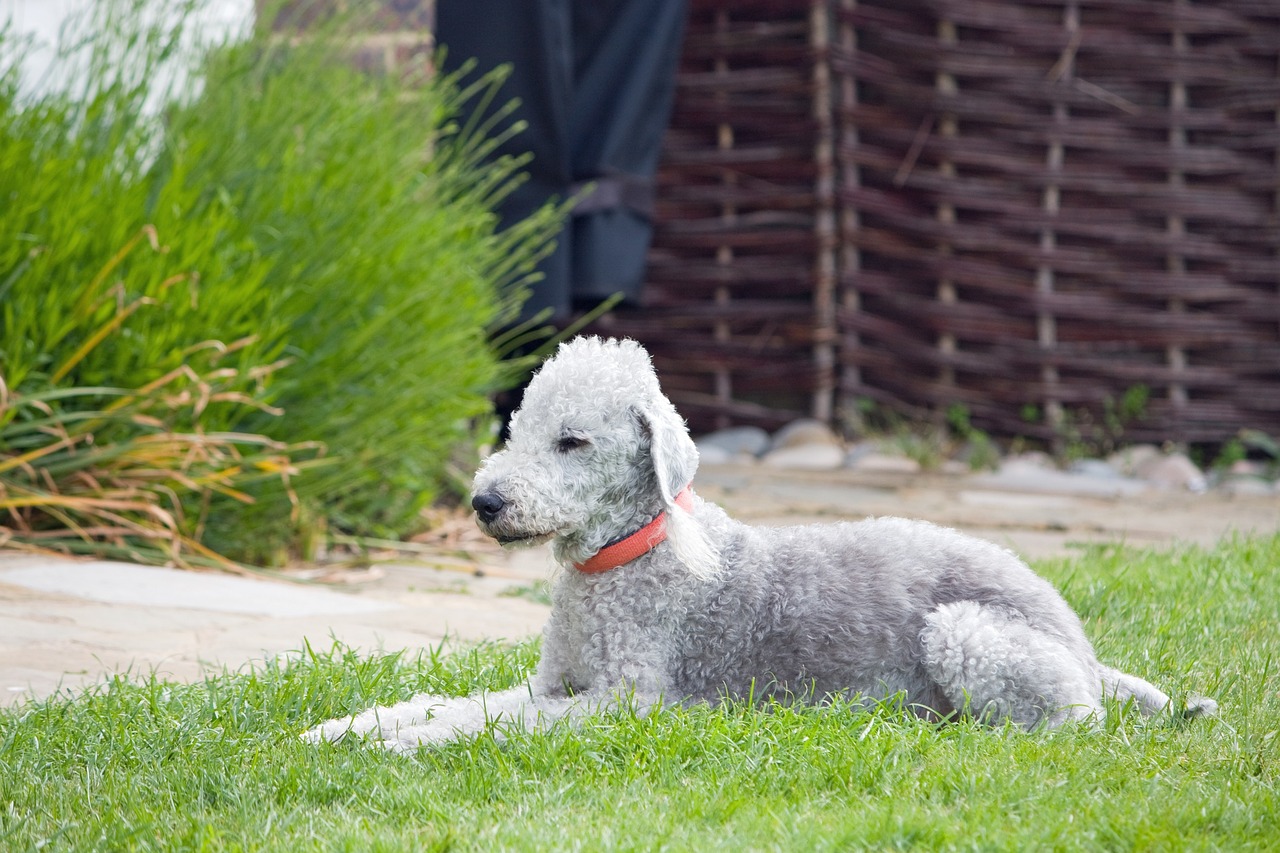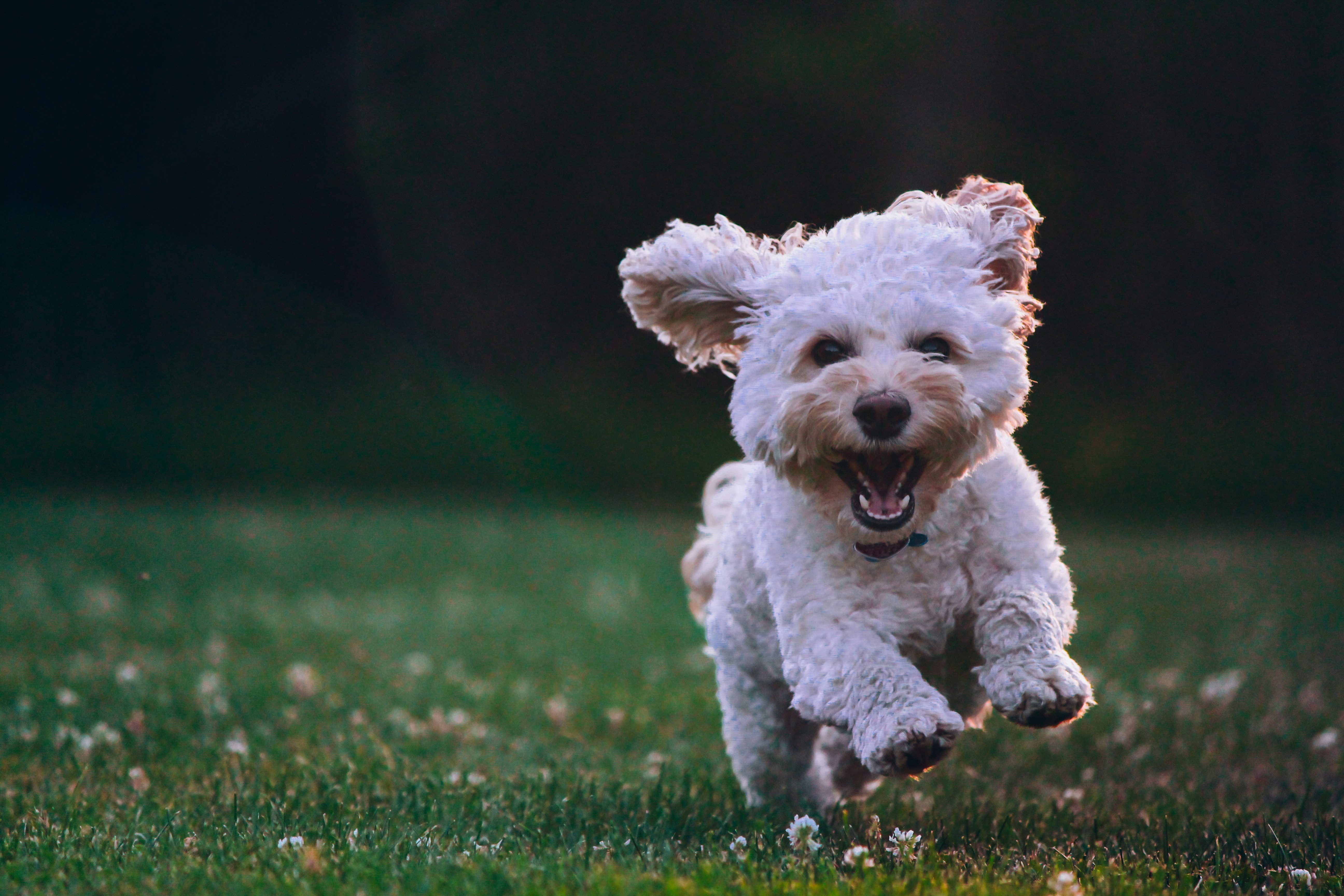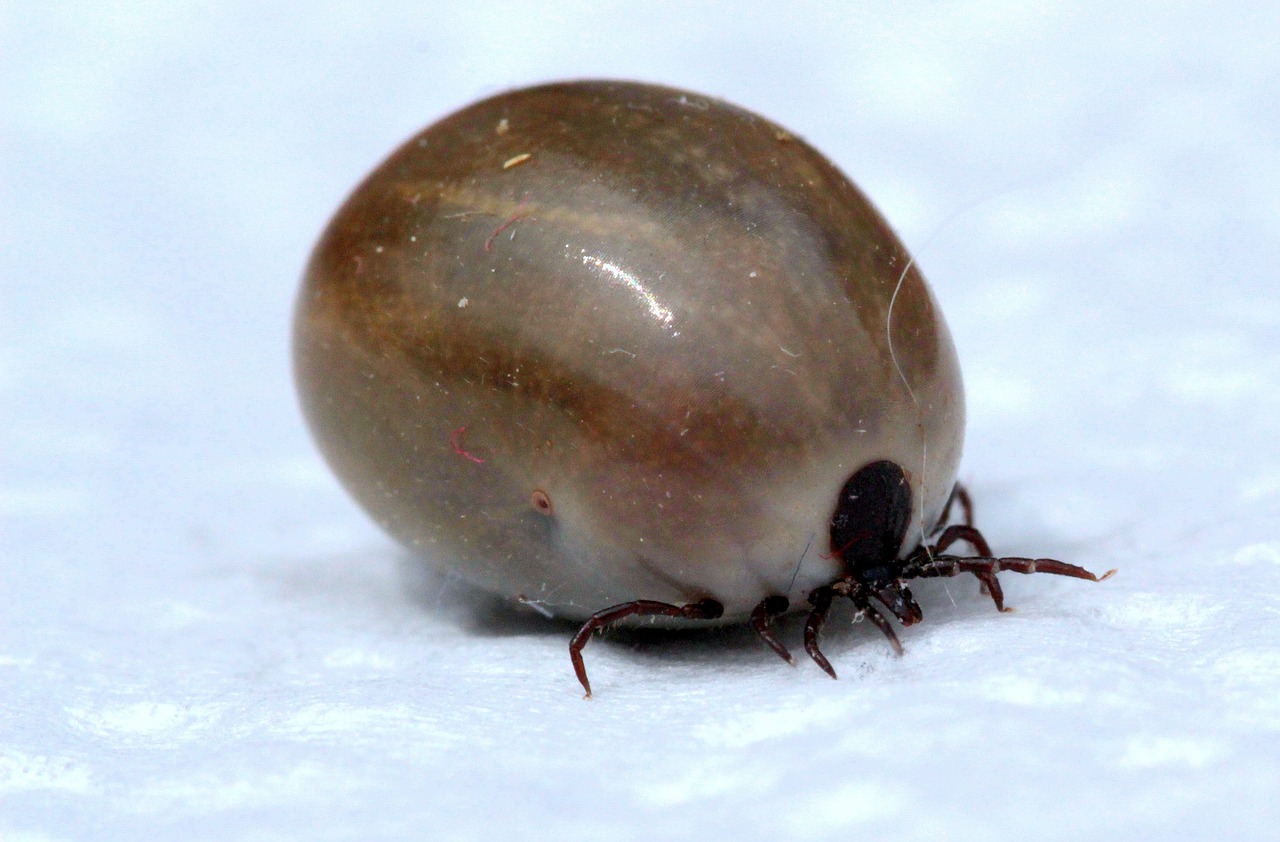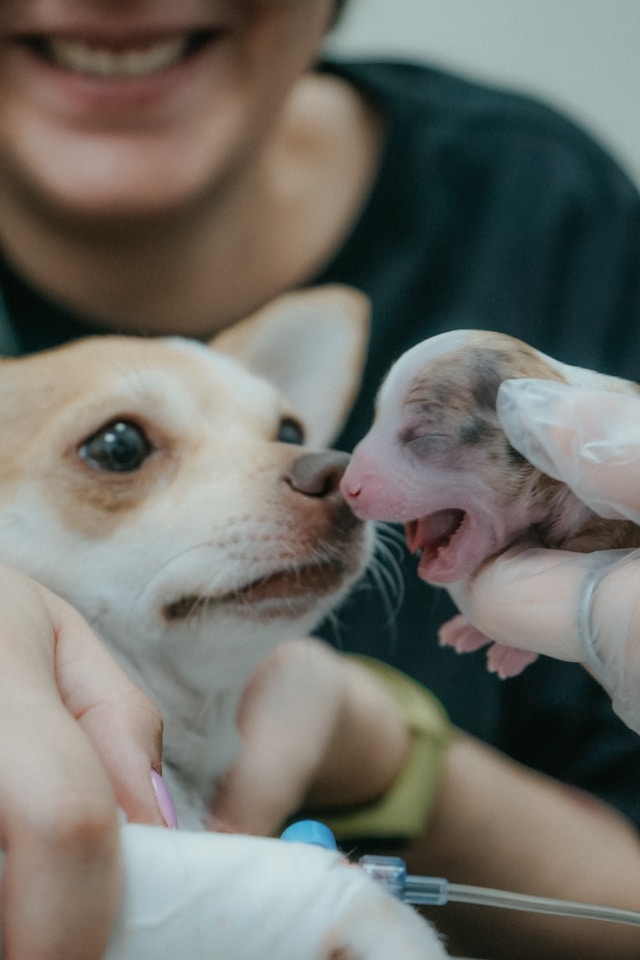Bedlington Terrier

| Official Name | Bedlington Terrier |
| Common Name | Bedlington Terrier |
| Pet Height | 15 to 17 inches |
| Pet Weight | 17 to 23 pounds |
| Lifespan | 11 to 16 years |
| Good With | cats, children, families, seniors |
| Temperament | friendly, gentle, outgoing, playful, willful |
| Intelligence | medium |
| Shedding Amount | infrequent |
| Exercise Needs | medium |
| Energy Level | active |
| Vocal Level | frequent |
| Drool Amount | low |
| Breed Group | terrier |
| Breed Size | small (0-25 lbs.) |
| Coat Length | curly, medium |
| Colors | blue, brown/chocolate/liver, cream |
| Patterns | bicolor, blue and tan, liver and tan |
| Other Traits | apartment-friendly, easy to train, good for first-time pet owners, good hiking companion, high prey drive, hypoallergenic, loves water, requires lots of grooming |
Bedlington Terriers are great companions for people of all ages and activity levels, but they can be a bit less friendly with other dogs. While they might get along well with the family cat, their terrier instincts could kick in when they see small outdoor animals, as hunting and chasing are in their nature. They're quick to bark when someone arrives but are just as quick to warm up to new people once introduced.
Appearance
Did Mary have a little lamb, or was it a Bedlington Terrier? It's easy to get confused! With its narrow head, fluffy topknot (lighter than the rest of its body), and unique triangular, tasseled ears, the Bedlington Terrier resembles a lamb. This breed's elegant, curvy body only adds to its charm, making it a real showstopper.
"Most people fall in love with the Bedlington's appearance before they know anything about the breed," says Jacquelyn Fogel, president of Cedar Creek Pet Resort. With 26 years of experience breeding, showing, grooming, and training Bedlington Terriers, she's heard it all.
"They either love him or hate him," Fogel shares. "Most people will say he looks like a little lamb. Some have even asked if he's really a dog! Despite lacking hooves, these dogs have a unique and amusing look. Generally, Bedlington owners adore the breed's distinct appearance, complete with the shaved face, ears, and tail, and those iconic ear tassels."
So, why the unusual haircut? Fogel explains that no one knows precisely how Bedlington's style came to be, but it might have practical roots. This breed was originally used to hunt vermin in the chilly northern U.K.
"Tassels and thick hair on the face can protect the dog from injury from angry prey, and their downy fur keeps them warm during hunts or when they venture into mines," Fogel explains.
Their unique coat doesn't shed much, and while no dog is completely hypoallergenic, the Bedlington Terrier's curly fur might be a good option for those prone to sniffles and sneezes around dogs.
Personality
The Bedlington Terrier is a bit of a paradox. On one hand, they're incredibly friendly, but on the other, they can be pretty vocal when a stranger approaches. It's like having a living, breathing alarm system. As expert Michael Fogel points out, these dogs bark their heads off when someone pulls into the driveway or steps through the door. But once they've met the newcomer, they quickly switch gears and become your best friend. The funny part? The next time you visit, they'll go through the whole barking routine again as if you're a brand-new stranger.
Like all dogs, Bedlingtons thrive on positive reinforcement training. A little treat can go a long way if you're trying to curb their barking. Keep some in your pocket when you know your Bedlington is about to meet someone new. The barking stops as soon as they realize they'll be rewarded for being quiet. Over time, with consistent training, you can teach them when it's okay to sound the alarm and when it's better to stay calm. When they're not busy barking at the doorbell, they're more likely to be found playing happily with their toys—especially those squeaky ones they love to tear apart.
Despite their affectionate nature, Bedlington Terriers are not overly clingy. They won't constantly demand belly rubs, but they enjoy being near their humans, often following them around just to be part of whatever's happening. They're active and agile but don't need as much exercise as other terriers. A good daily walk is usually enough to keep them content, and they don't need a constant job to stay happy.
These cheerful little dogs are great with people of all ages. Fogel mentions that Bedlingtons have a natural instinct to protect and watch over tiny babies and provide comfort to seniors with their soft, pettable coats. However, like with any dog, children should learn to respect a Bedlington's space, and young kids should always be supervised when playing with any dog.
Bedlington Terriers are generally good companions if you have cats, especially if they've grown up together. Outdoor small animals, though, might stir up their terrier instincts.
While Bedlingtons are sweet with their families, they might not get along with unfamiliar dogs and might be happiest as the only pets in the household.
Living Needs
Whether you love lounging at home or enjoy being active outdoors, the Bedlington Terrier will be right by your side, eager to join in. This breed is versatile and enjoys various activities, from casual outings to more structured events. Whether hiking, biking, participating in Earthdog tests, flyball, agility courses, or even swimming, the Bedlington is up for it all. The key to their happiness is simply being involved in whatever you do.
Despite their small size, Bedlington Terriers can be great apartment dogs if they get a good walk each day. But don't worry if you occasionally miss a day—these dogs are pretty forgiving. If you have a home with a fenced yard, they'll love spending time there too.
According to Fogel, Bedlingtons are excellent walking companions because they tend to stay close and quickly return when called. While keeping them on a leash in busy areas is best, they enjoy the freedom to run around on more open, rural properties.
Bedlingtons are affectionate dogs who bond well with everyone, from kids to seniors. Their playful behavior, soft coat, and curious nature make them a favorite among many. They typically get along well with family cats, but it's crucial to remember their hunting instincts. Early socialization is key, helping them learn that cats are friends, not prey.
Dog behavior consultant Kayla Fratt suggests introducing Bedlington puppies to cats early on to help them understand that cats aren't to be chased. While Bedlingtons might be friendly with dogs they've grown up with, they can be feisty with unfamiliar dogs. It's wise to keep them on a leash in areas with many other dogs and supervise their interactions. Bedlingtons are generally easy to crate train and don't mind relaxing in their crate, even if another dog is around.
Care
While the Bedlington terrier is often labeled "hypoallergenic," don't assume that his minimal shedding means his coat is easy to manage. Those signature curls need a trim every six to eight weeks, and unless you're highly skilled with grooming tools, you might want to leave this task to the professionals.
"The typical Bedlington trim is one of the most intricate among regularly groomed dogs, although most pet owners opt for a shorter, more manageable version," says Fogel. "The Bedlington's coat is the softest of any breed, and even the most experienced groomers find it challenging to get just right."
You'll also need to brush or comb your Bedlington once or twice weekly. But here's some good news: even though it's common for lighter-colored Bedlingtons to develop staining around their eyes, mouth, and feet, frequent baths aren't necessary and could actually make their soft fur turn coarse. Keep his nails trimmed so they don't click on the floor, get him used to brushing his teeth from an early age, and use your weekly grooming sessions to check for any changes in his skin or coat.
When it comes to training, Bedlington terriers are highly motivated by rewards. Positive reinforcement through praise, play, and treats will make training a fun experience for both you and your dog.
"Take advantage of your terrier's prey drive by using toys as rewards," suggests Fratt. "Teaching a young terrier to focus on, then look away from, a potential prey animal in exchange for food or a toy can help keep walks under control."
Barking is another common trait in terriers that Fratt advises managing carefully. "If you don't want your dog to bark when he wants to go outside, make sure to reward calm behavior instead of barking," she explains. "Yelling at a barking dog rarely works in the long term, so stay calm and remember that barking is a natural behavior for dogs."
With the right outlets for his energy, plenty of quality time with his family, and some daily exercise, the Bedlington terrier is a joyful companion who fits well into any household—provided you're up for the grooming commitment.
Health
The Bedlington Terrier is a robust and agile breed known for its generally good health, with many living well beyond their typical lifespan of 11–16 years. However, if you're considering bringing one into your home, some essential health considerations must be remembered.
The Bedlington Terrier Club of America advises that all Bedlington Terriers undergo specific health screenings. These include DNA tests for copper toxicosis, heart and knee (patella) examinations, and regular eye checks, ideally starting before their first birthday.
Dr. Maggie Brown-Bury, a former president of the Newfoundland and Labrador Veterinary Medical Association, emphasizes the importance of eye health in this breed. "Bedlington Terriers can be prone to certain eye conditions, so breeders must conduct CERF or OFA eye exams," she explains. "Owners should also ensure their dogs receive thorough eye exams as part of their routine health care."
In addition to eye concerns, Dr. Brown-Bury notes that Bedlington Terriers can be affected by other conditions like exocrine pancreatic insufficiency, epilepsy, allergic skin disease, and Cushing's syndrome. While these issues are not overly common in the breed, they are worth being aware of as a responsible owner.
Exercise Requirements
The Bedlington Terrier is a lively dog that thrives on moderate exercise to stay happy and healthy. A 20-minute daily walk combined with a fun game of fetch is usually enough to keep them in good shape. As they get older, you might need to give them a little extra motivation to stay active.
This breed also shines in the show ring. Their sharp minds and love for being in the spotlight make them ideal for agility courses, learning tricks, and playing games. These activities keep them physically fit and provide much-needed mental stimulation.
Keeping their minds engaged is crucial. A mentally stimulated Bedlington Terrier is less likely to become bored or destructive, making for a happier and more well-behaved companion.
Training
Training a Bedlington Terrier can be tricky due to its intelligence and independent streak, but it can also be a rewarding experience with the right approach. To make the process smoother, keep training sessions short, engaging, and fun. Positive reinforcement—like treats, games, and lots of praise—will help them understand what you want and encourage good behavior.
It's also helpful to incorporate games that reinforce your teaching commands. Remember, Bedlington Terriers have a strong will, and if they sense you're frustrated or upset, they might dig in their heels. Yelling or using any kind of harsh discipline will only make them more stubborn, so it's best to stay patient and calm.
Start with socialization, helping your Bedlington get comfortable around other people, pets, and environments. From there, focus on basic behavioral and obedience training. Since this breed has a natural instinct to chase small animals, teaching them commands like "come" and "heel" is especially important to keep them safe and under control.
History
The Bedlington Terrier is one of the most unique-looking dogs in the terrier group, but it's not just their appearance that sets them apart. These dogs have the distinction of having the oldest, unbroken pedigree among all purebred terriers. Their history dates back to 1782 when they were linked to a dog owned by Squire Trevelyan in the English town of Netherwhitton, near Bedlington. Although breeding records weren't meticulously kept back then, it's believed that breeds like the otterhound, whippet, poodle, and possibly the bull terrier played a role in creating the Bedlington Terrier. About 40 years later, these dogs were bred in Bedlington, giving the breed its name.
Interestingly, the Bedlington Terrier wasn't bred to look like a lamb; early breeders focused on creating a hunting dog with stamina, courage, loyalty, and determination. The Bedlington just happened to embody these qualities in a graceful and eye-catching form.
The Bedlington Terrier wasn't just a hunter; in the nearby mining town of Northumberland, these dogs were also employed as coal mine ratters and vermin catchers. Their loyalty and stylish appearance soon caught the attention of the British elite, leading the Bedlington Terrier to transition from a working-class dog to a beloved companion in grand estates and the show ring.
The Bedlington Terrier's popularity continued to grow, leading to the formation of England's National Bedlington Terrier Club in 1877. Just nine years later, the American Kennel Club registered its first Bedlington Terrier, making it the 25th breed recognized by the organization. Today, while relatively rare, the Bedlington Terrier remains a cherished pet in the U.K. and the U.S.
Fun Facts
This charming pup has his very own sports team! The Bedlington Terriers Football Club, located in Bedlington, U.K., has existed since 1949. However, they only adopted the Terrier mascot in 1980. Nowadays, when they score a goal at home games, you'll hear "Who Let the Dogs Out" and see signs for the locker rooms labeled as "kennels."
In Bedlington, you can even find park benches shaped like these adorable terriers.
While many adult Bedlington terriers appear white or light-colored, their puppies are born black or brown, with their coats gradually lightening as they grow up.
Get insurance plans with wide-ranging coverage options













